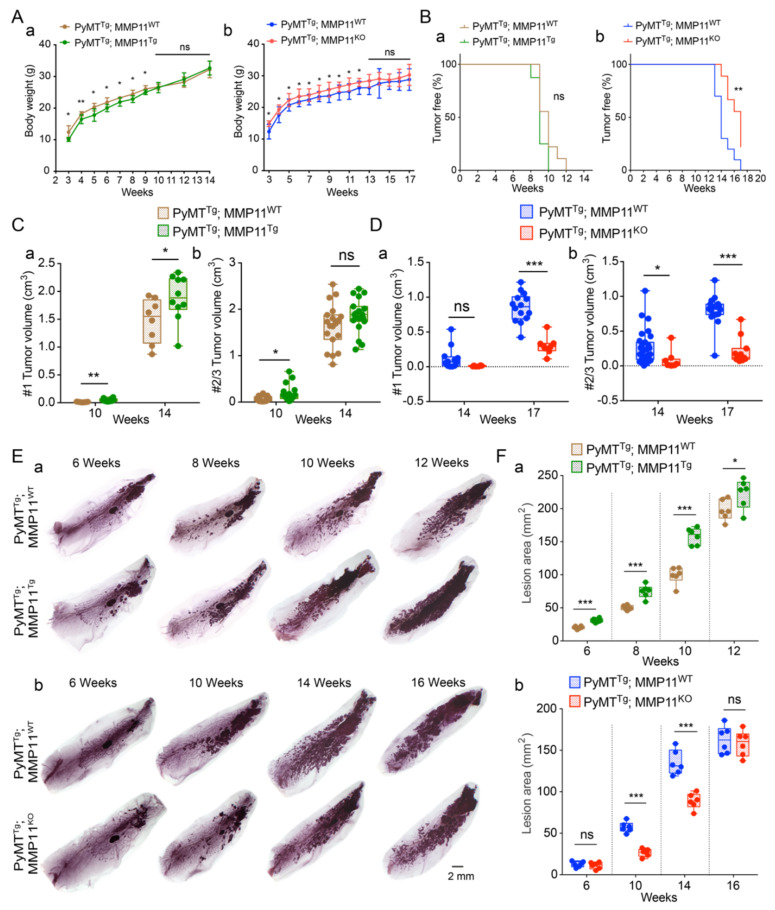Figure 1.
(A) Analysis of mice body weight in polyoma middle T antigen (PyMT)Tg; matrix metalloproteinase 11 (MMP11)Tg (a) and PyMTTg; MMP11KO (b) animals as compared to their respective PyMTTg MMP11WT controls. Overexpression of MMP11 decreased body weight before 9 weeks of age, whereas MMP11 inactivation increased mice body weight before 12 weeks of age; (B) Analysis of mice tumor development in 10- and 14-week-old PyMTTg; MMP11Tg (a) and in 14 and 17-week-old PyMTTg; MMP11KO (b) mice. (a) No difference of percentage of tumor-free mice between PyMTTg; MMP11Tg mice and controls; (b) PyMTTg; MMP11KO mice exhibited a significant increase in the percentage of tumor-free mice as compared to PyMTTg; MMP11WT animals; (C,D) Analysis of tumor volume in mammary glands #1 (a) and #2/3 (b) in 10- and 14-week-old PyMTTg; MMP11Tg (C) and in 14- and 17-week-old PyMTTg; MMP11KO (D) mice, one dot corresponding to a palpable tumor; (E) Whole mount carmine-red staining of #4 mammary glands showed the developmental hyperplasia and neoplastic lesions at different time points in PyMTTg; MMP11Tg mice (a) and in PyMTTg; MMP11KO mice (b) as compared to their respective controls; (F) Quantification of the lesion area of hyperplasia and neoplasm as represented in E in PyMTTg; MMP11Tg mice (a) and in PyMTTg; MMP11KO mice (b) as compared to their controls. N = 6–8 mice/group, data are presented as mean ± standard error of the mean (SEM). * p < 0.05, ** p < 0.01, *** p < 0.001 (unpaired t-test).

